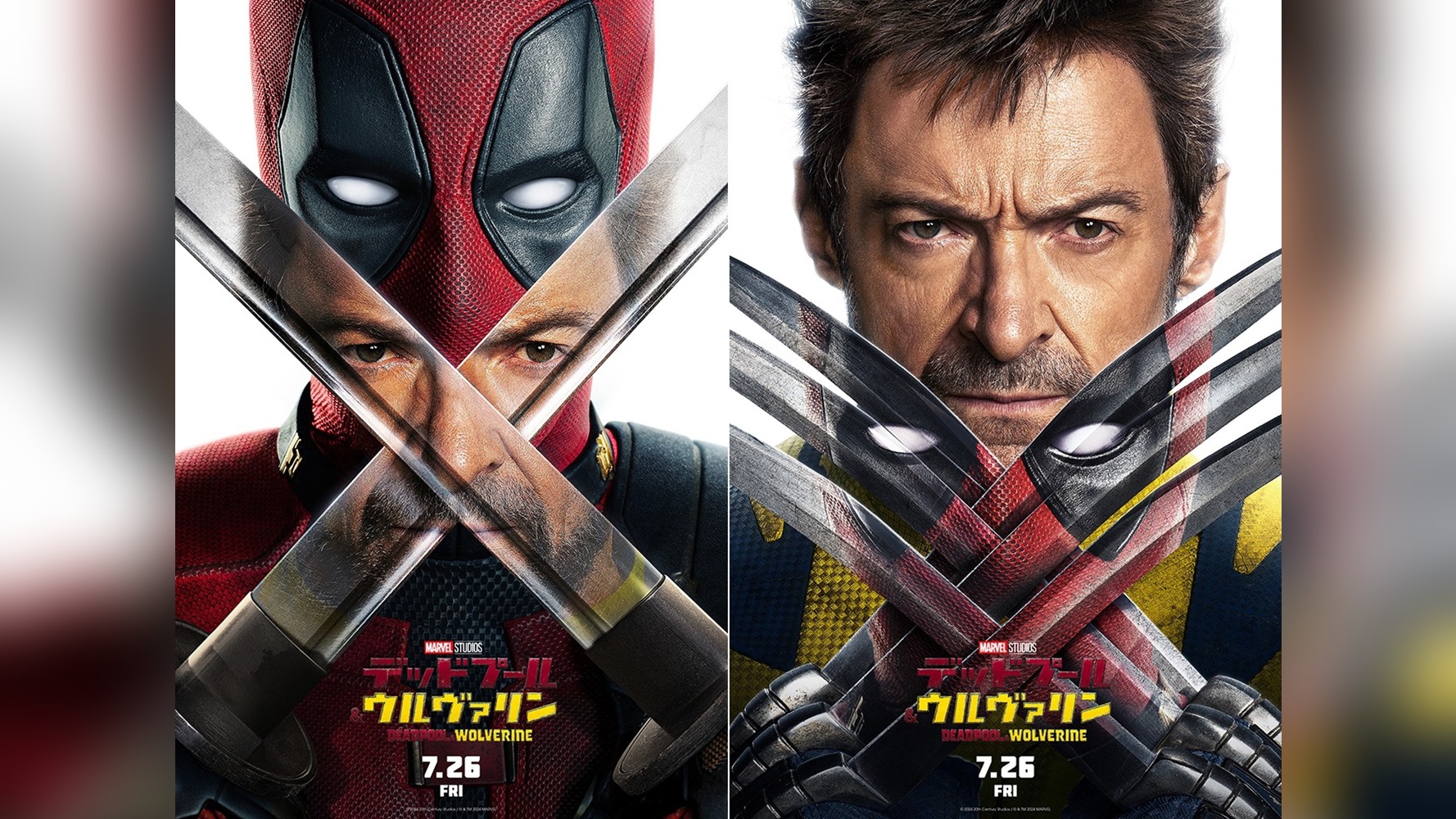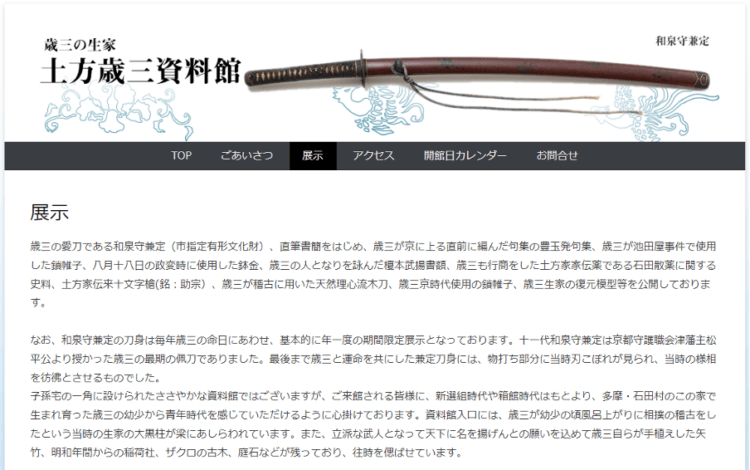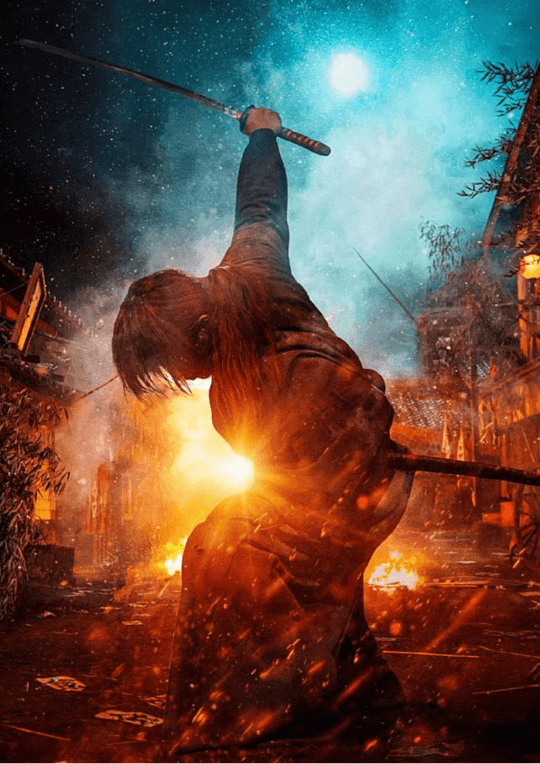From oriental warriors like Kenshin and Demon Slayer Corps to American comic heroes like Deadpool and Wolverine, everyone loves to use it! A brief discussion of Japanese swords in film and television works:
Do you also think the "Samurai Sword" is cool? As a major cultural exporter in Asia, Japan has attracted not only Asian countries but also the Western entertainment industry with its long and mysterious culture. Even in the modern 21st century, elements such as Bushido, swordsmanship, and ninjutsu still often appear in film, television, and animation works. Among them, the scenes of powerful characters wielding samurai swords in battle are so handsome that many people have become interested in and fascinated by Japanese samurai swords, and some have even come into contact with and practiced Japanese martial arts. Let us use the window opened by film and television works to unveil the mysterious veil of Japanese swords and take a glimpse at the charm of Japanese swords!

Video recording of Japanese craftsmen forging knives and claws for the American comic hero movie "Deadpool and Wolverine":
Closely related to Japanese history? The evolution and development of Japanese swords: straight sword, katana, and katana
The earliest history book in Japan, "Kojiki", records that Amaterasu bestowed the three sacred treasures, the "Yata Mirror", the "Kusanagi Sword", and the "Yashakani no Magatama" on Ninjago no Mitsukoshi, and that Ninjago no Mitsukoshi was the great-grandfather of the first emperor, Emperor Jimmu. Therefore, the "sword", as one of the symbols of the divine right of kings, has a noble status in Japanese culture.
At the end of the Genpei War, when Emperor Antoku jumped into the sea, the Murasaki sword, a symbol of the emperor's legitimacy, was lost. Later, Emperor Go-Toba, the half-brother of Emperor Antoku, was said to have devoted himself to the forging of swords in order to make up for the loss of the Ame-no-Murasakumo sword, and established the "Goban Forge" system. The swords made by Goban Forge can even be engraved with the chrysanthemum pattern representing the royal family, which is called "Kikugosaku", giving swordsmiths the opportunity to excel. Japan is a country of samurai. Throughout history, the samurai have always been at the center of Japanese politics. The Japanese sword, which is closely related to the life and death of the samurai, has also become one of the symbols that demonstrate the identity and status of the holder. Therefore, Japanese swords, which continue to strive for excellence in quality and quantity, are passed on and circulated among famous artists as true treasures.
In addition to the existing treasure house, Atsuta Shrine, which enshrines the sword Ame no Murasaki, established the " TOP-SWORD " in 2021 to display dedicated swords and has an experience area.
The shape of Japanese swords is closely related to Japan's history. With the evolution of the times and the form of war, they have different appearances and functions. Among the cultural relics unearthed in Japan, the earliest swords were not the curved single-edged swords we are familiar with, but straight "straight swords", which are believed to have been passed down from ancient China to Japan. It was not until the Kofun period that Japan began to produce iron swords. Since the Heian period, the main method of warfare has been horseback combat, and the longer "tachi" has become the mainstream. The five swords collectively known as the "Five Swords of the World", which are the greatest masterpieces of Japanese swords, are all tachi.
In the Muromachi period, the form of warfare changed from horse-riding warfare to foot warfare, so the shorter "katana" became the main weapon and has been passed down to this day. Although different swords have different names depending on their uses, today, if we only talk about the word "sword", it basically refers to the katana. The Shinsengumi, which was active in the last years of the shogunate, used the katana as their main weapon.
The beloved sword of Shinsengumi Vice-Commander Hijikata Toshizo, Izumi-no-kami Kanesada, is exhibited at the Hijikata Toshizo Museum every year around the anniversary of Hijikata's death (May 11).

After World War II, the Supreme Commander of the Allied Powers received or discarded a large number of Japanese swords that were used as weapons in order to disarm Japan. After that, in order to preserve the Japanese sword culture, Japan included the Japanese sword in the category of art, allowing the Japanese sword to be passed down as a cultural asset. From then on, the era of cold weapons can be said to have come to an end.
Japanese swords in movies, TV series and animations such as "Excalibur"'s reverse blade, "Demon Slayer"'s Nichirin sword, "The Last Samurai" and "47 Ronin"
• "Excalibur"
• In my time, many people's first exposure to swordsmanship, Japanese swords and samurai culture was through the work”TOP-SWORD". Although the protagonist Kenshin Himura was once a killer at the end of the shogunate, the executioner Battousai, after the Meiji Restoration, Kenshin used his invincible sword "Reverse Blade" and the Hiten Miken-ryu moves to defeat the villains who tried to destroy the peaceful world one by one. In 2012, a live-action movie version of the "Excalibur" series was released, with popular actor SWORD playing Kenshin Himura. The heavy sense of the era background and the wonderful action scenes made this classic work reach its peak again. In 2023, in Seki City, Gifu Prefecture, Japan, one of the world's three major knife production areas, the 25th and 26th generations of swordsmiths, Fujiwara Kanefusa, recreated two fictional weapons in the work - Kenshin's reverse-edged sword and the real infinite blade of Kenshin's strongest opponent Shishio.
The live-action film version of the "Excalibur" series not only recreates the original work, but also successfully creates a sense of reality, and even fans of the original comics highly praise it.
• Touken Ranbu
Next, Nitro+ launched the web game " Touken Ranbu " on the DMM platform . The characters that appeared were "Tsukumogami" who were inhabited by famous swords in history. The lines and appearance were integrated with the history or legends of the swords and their original owners. After the game was adapted into various cross-media works, original characters also appeared in the derivative works. Once the rare and famous swords that appeared in the original and related works were exhibited, it was often difficult to get tickets to the exhibition hall. The revenue from admission tickets and its surrounding economic benefits, as well as direct donations from sword fans to fund the operation of the museum or the restoration of swords, form a positive cycle between collectors, sword makers, related businesses and enthusiasts.
Touken Ranbu also contributed to the restoration fundraising project established by Kunoyama Toshogu Shrine , which houses the favorite swords of successive shoguns of the Tokugawa shogunate .
• Demon Slayer: Kimetsu no Yaiba
In recent years, " Demon Slayer: Kimetsu no Yaiba " has become popular both in Japan and abroad. In the game, the "Demon Slayer Corps" uses the "Nichirin Sword", a weapon that matches their own nature, to fight against the power of demons. This has made the already popular Japanese sword culture more appealing to a lower age group and has become a common topic for adults and children. Ufotable, the production company of the anime version of "Demon Slayer: Kimetsu no Yaiba", used the knowledge about Japanese swords and hand-to-hand combat accumulated from the production of "Katsuki Touken Ranbu" in the past to bring out the charm of swords to the fullest in the pictures. In addition to the exciting battle scenes with the Nichirin swords, the work also includes a chapter on visiting the swordsmith village , which brings the forging process of Japanese swords into the audience's view
The official "Demon Slayer" has launched a series of 1:1 scale Nichirin sword models to satisfy fans' wishes to join the Demon Slayer Corps.
• Hollywood movies such as "The Last Samurai" and "47 Ronin"
Hollywood movies have always been curious about Japan's Bushido culture. In 2003, they released the epic blockbuster " The Last Samurai " set in the late Edo period of Japan, starring Tom Cruise , using a Western perspective to commemorate the Bushido spirit that was gradually disappearing in modernization. Ten years later, " 47 Ronin " , which incorporates fantasy elements and is adapted from " Chushingura ", one of the three major revenge events in Japan , was released. Even though it was called box office poison, the film company still decided to shoot a sequel .
Among the Marvel movie heroes that have been the talk of the town recently, Deadpool is set as a superhero who uses a Japanese sword as a weapon. " Wolverine: Samurai War " and " Avengers 4: Endgame " also set the stage in Japan, allowing Western heroes and Eastern samurai to exchange ideas and fighting skills. Even though the film has received mixed reviews and there have been calls for cultural appropriation recently, the image of a handsome warrior who is reserved and mysterious, willing to sacrifice his life for his ideals, continues to appear as a beloved symbol in both Eastern and Western film and television works.

Buy knives here:top-sword, try them out there, and you can also get up close and personal with Japanese swords!
In response to the Japanese sword craze in recent years, museums often hold special exhibitions centered on swords, and the treasure halls of shrines and temples also provide opportunities to get close to swords. However, when it comes to museums and exhibition halls dedicated to swords, we have to mention the Sword Museum established by the Japan Art Sword Preservation Association. The Japan Art Sword Preservation Association was established to protect and promote Japan's cultural assets, and is also qualified to issue sword appraisal certificates. In addition to running a sword museum, the association also organizes various lectures, regular appreciation meetings and other activities. If you have the opportunity to participate, you will definitely gain a deeper understanding of Japanese swords.
In addition, cities that have been famous for sword production or battlegrounds since ancient times often have related facilities available for visit. The former include the Bizen Osafune Sword Museum in Nagafune-machi, Setouchi City, Okayama Prefecture, or the Seki Blacksmithing Heritage Museum in Seki City, Gifu Prefecture. Okayama (roughly the ancient "Bizen Province") and Gifu (roughly the ancient "Mino Province") are both the birthplaces of the "Gokaden " , one of the five major schools of Japanese swords. The sword-forging culture has been passed down to this day, and you can feel the atmosphere of its historical heritage by actually visiting the local area. The latter, for example, the Nagoya Sword Museum (Nagoya Sword World) in Nagoya, was established by the Sword World Foundation, and is a sister museum to the "Sword Collection Nagoya, Marunouchi/Mini Museum" in Aichi Prefecture and the "Sword Collection Kuwana, Tado" in Mie Prefecture. It also displays Japanese swords and other ancient weapons and armor.
The Guan Blacksmith Heritage Hall once exhibited the reverse-blade sword and infinite blade from "Excalibur" made by professional swordsmiths.
If you are obsessed with Japanese swords and want to buy one from Japan and bring it home, you will need to go through a lot of procedures, reviews and registrations. If you have to choose to buy a simulated knife as a decoration, there are many related stores you can visit in major tourist spots in Japan. For example, "Tosando", which originated in Kyoto and sells martial arts props, opened a new store near Yasaka Shrine, a popular tourist attraction in Kyoto, in 2024 after the epidemic, specializing in selling artistic swords and preserved swords. The existing Shogoin branch sells imitation swords such as Iai swords and martial arts supplies. This shows how much foreign visitors are interested in Japanese swords, and it has also promoted the revitalization and development of the industry.
If you want to fulfill your desire to become a samurai or ninja, Japan also has some facilities that welcome tourists. For example, the Japan Tsatsudo Association in Osaka offers short-term courses with different programs to teach guests how to perform gorgeous Tsatsudo dances for use in filming movies and TV shows. Kyoto's "Uzumasa Studio Park", a famous filming location for period dramas, also regularly stages battle performances, using the existing ancient scenes to take guests back to the era of samurai. Kyoto, Osaka and other places also offer the "iai slash" experience, where guests can try cutting straw mats with real swords.
In addition, the famous ninja hometowns of Iga and Koga have also established the "Iga-Koga Ninja Association", which offers experience routes that include cultural tours and watching ninjutsu performances . The famous "Fuma Ninja" served the Hojo clan during the Warring States Period. The center of the Hojo clan's power was Odawara Castle, located in present-day Kanagawa Prefecture. The history museum attached to the castle also has some approachable levels, which are suitable for people of all ages to experience the fun of ninjutsu mechanisms.
Tatsujindo is a martial arts technique required for stage and drama, not ancient martial arts, but tourists can still experience the actual practice process of movie stars at the Tatsujindo Association (Photo: Japan Tatsujindo Association )
In addition to performances and experiential activities, real Japanese martial arts have also opened dojos in Japan and abroad to promote etiquette and the spirit of martial arts. In addition to the well-known kendo, there are various schools of "iaido" and "battōdō", which actually use real swords or iaidō swords that imitate the appearance and weight of real swords for practice. Although the number of people who practice naginata-jutsu, which uses the long-handled weapon naginata, is small now, it was a required martial arts course in Taiwanese girls' schools in the early days.
The charm of Japanese swords is enhanced by the interaction between time and culture, reality and creation.
When many people come into contact with Japanese culture through movies, TV shows, and anime, and then become interested in Japanese swords, this new encounter does have a significant impact on the long-standing Japanese sword culture. As a result, some people dug out Japanese swords that had been passed down in their families but had not been maintained, and ancient swords from shrines also had the opportunity to see the light of day again, making the Japanese sword community more active than ever before. This cross-cultural and mutually complementary mutual stimulation has become a living source of existing culture thousands of years later, continuing to add new colors both for creative themes and for cultural heritage.
Semantic Keywords: Mixes historical terms (tachi, Gokaden) with pop culture references (Demon Slayer, Deadpool) for broad appeal.
Local Intent: Includes location-based keywords (Seki, Kyoto, Nagoya) for travelers.
Buyer Intent: Covers purchasing (replicas, export regulations) and experiential keywords (iaido, tameshigiri).
Trending Terms: Leverages current hype (Demon Slayer, Marvel movies).
Long-Tail Keywords: Targets niche queries like "where to try samurai sword cutting in Japan."
This strategy balances educational content for history enthusiasts and actionable guides for anime fans/tourists, maximizing organic reach across demographics.
